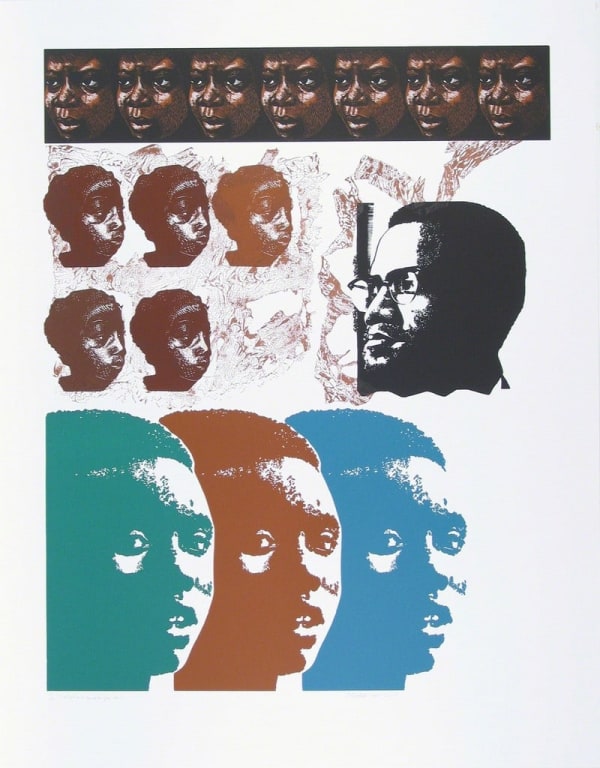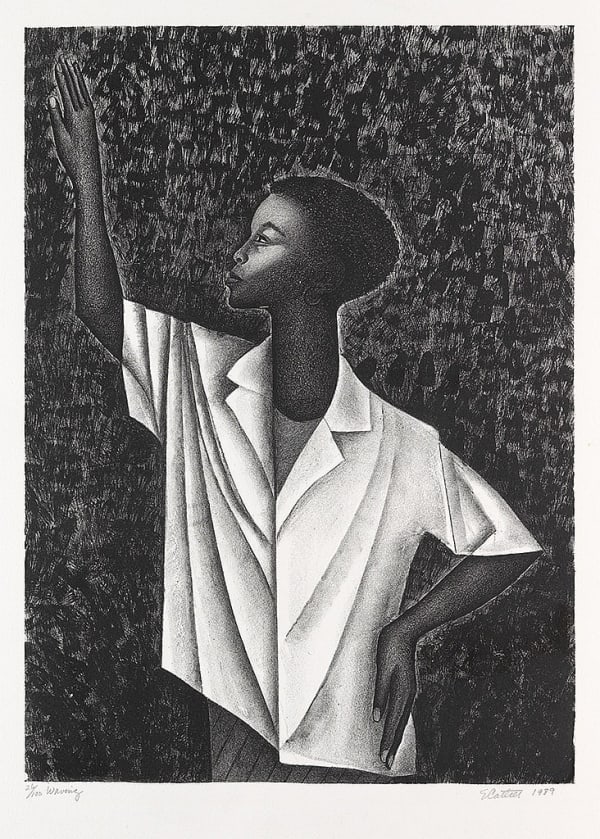Elizabeth Catlett US/MEXICO, 1915-2012
“I am inspired by Black people and Mexican people, my two peoples.”
- Elizabeth Catlett
Elizabeth Catlett liked to recall how the American Regionalist painter Grant Wood, with whom she studied in the 1930s, told his students, “Do something that you know a lot about, the most about.” According to Catlett, what she knew “most about” were “women,” “black people,” and “working people.” These were the subjects she returned to again and again, in paintings, prints, and sculptures of remarkable variety and emotional range.
Catlett’s linoleum cut Sharecropper and terra-cotta Mother and Child were created in Mexico, where she moved in 1946. Mexico offered her both an escape from American Jim Crow laws and the opportunity to work at Mexico City’s Taller de Gráfica Popular, a reform-minded printmaking collective with which she shared a commitment to collaboration, accessibility, and affordable art for all. She made Sharecropper under the Taller’s auspices. Catlett had spent childhood summers with her grandparents in North Carolina, and she would recall, “As a child I remember seeing [sharecroppers] living and working in extreme poverty.” Like her own grandparents, these African American sharecroppers were former enslaved people, or else their descendants, and under the rural South’s racist farming system they continued to be exploited long after slavery’s end.
But Sharecropper is hardly intended to arouse pity or rage: its composition and cropping make the viewer look up at this figure as someone to be respected and even venerated. The safety pin that holds her jacket closed is a succinct sign of poverty, while her broad-brimmed straw hat would have sheltered her from the sun when working the fields. The economy of the print’s narrative is countered by the variety of its patterns and marks and its dramatic lighting. These, along with the simplified planes of the figure’s body, face, and hat, demonstrate Catlett’s modernity.
The theme of Mother and Child is universal across cultures and times, but the faces are ethnically specific, including tenderly detailed aspects of Black physiognomies such as tightly curled hair, broad noses, and full lips. The body of the mother, by contrast, is generalized: despite its small size, it has the gravity and weight of one of Michelangelo’s sibyls, or, closer to Catlett, of the monumental, muscular types seen in the paintings of Catlett’s contemporaries the Mexican muralists. To model the work, Catlett used coils of terra-cotta to create a hollow form—a pre-Hispanic method that she learned from the artist Francisco Zúñiga. The asymmetry of the mother’s pose contributes to the sculpture’s dynamism, while her downturned gaze and particular quality of physicality—its private, protective, introspective tenderness—likely owe to Catlett’s own experience as a mother: the impression is less of a model observed than of memories of what it feels like to cradle the weight of a child.
Mother and Child and Sharecropper are very different in form and mode of address, but each uses a simplified monumental naturalism to present a strong, dignified image of a Black woman. Catlett pulled the Museum’s print of Sharecropper sometime between 1968 and 1970, at a moment in US history when the Civil Rights and Black Power movements made her powerful, positive, politically charged images of the 1950s freshly relevant. “Art for me now,” Catlett wrote in 1971, “must develop from a necessity within my people. It must answer a question, or wake somebody up, or give a shove in the right direction—our liberation.” While the racial and gender inequities that her work addresses remain all too present today, her belief in the power of her art to encourage change and reform perceptions of her people—“women,” “black people,” “working people”—never wavered.
- Courtesy of MOMA



